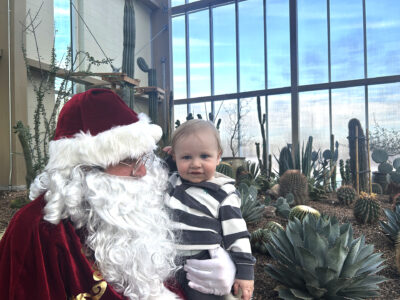Local dancer takes hoopspirational journey

Submitted Photo Jamie Zammert dances with one of her favorite yellow hoops at a local park. Photo from Dyana DeCoteau-Dyess.
Jamie Zammert started hula hooping 15 years ago when she needed to find a form of exercising compatible with her severe asthma.
“I was having a lot of health problems,” Zammert said. “There’s not a lot of exercises I can do because of my asthma and I’ve never felt comfortable in a gym a day in my life.”
Now, Zammert runs her own custom hoop making business and is teaching hula hoop classes at a local fitness studio.
This hoopspirational journey began when Zammert asked a friend if there were any exercises she could do safely with her asthma and that friend suggested hula hooping.
Zammert began researching hula hooping and discovered it could be much more than simple “around the waist” hooping.

Audin Rhodes/MDN Jamie Zammert sorts through some of her many self made hula hoops at her booth downtown during Arts in the City on Thursday.
“There was a whole art form. There was a dance form,” Zammert said. “So I went and bought myself my first hoop and an instructional video and I spent that entire winter in my house, cooped up, watching and learning. Then by spring I was outside hooping for four hours a day some days.
“People don’t realize but it’s a full aerobic workout. You burn more calories hula hooping than running if you’re doing and incorporating all the moves,” Zammert said. “And it’s lower impact on the body, so if you have breathing issues, it’s not as impactful. If you have mobility issues you can still get fitness without having to over-exert your body or injure yourself.”
Minot residents may have seen Zammert hoop dancing at Oak Park during Arts in the Park events and at shows hosted by the Misfits of Minot. Zammert also recently performed at the Midsummer Festival at the Scandinavian Heritage Park and at Oak Park for Minot’s Juneteenth celebration.
Flow
Zammert explained hula hooping and hooping are mostly interchangeable terms.

Audin Rhodes/MDN Jamie Zammert hoop dances before Arts in the City: Thursdays Downtown begins on this past Thursday.
“I think for most people, when they hear hula hooping, they think of waist hooping. They think of the classic, ’50s hula hooping,” she said. “Hooping becomes hoop dancing once you add the other elements into it.”
Hooping and hoop dancing are flow arts, which are physical activities utilizing props and artful dance. These activities often lead practitioners to a flow state.
“The flow state is when you take what you have, even if it’s just basic waist hooping, and you put on some music and you zone out and allow yourself to just feel and be in that moment,” Zammert said.
Unsurprisingly, going with the flow is an important aspect of the flow state.
“Do whatever feels natural,” Zammert said.
“I feel like the flow state allows me to be in touch with my higher self or my inner self, rather than all the other noise that’s like, ‘Did you finish washing the dishes? Did you get the kids’ clothes washed?’ … All those other stressors of daily life,” Zammert said.
Zammert may have initially started hooping for her physical health, but she realized it improved her mental health as well.
“I am autistic and have ADHD and I can’t sit and meditate without getting even more anxious because I can’t do it,” Zammert said. “So hula hooping, I found, actually silenced my brain and allowed me to just be.”
If there are things or stressors Zammert needs to mentally or emotionally work through she’ll “hoop it out.”
“I find that I hold onto feelings. I get stuck in loops of thought and loops of emotion and it’s hard to get out so hooping helps me move on,” she said.
If Zammert is struggling to get something done, she will hoop to reset and is then able to accomplish tasks needing her attention.
Fire
In addition to her solo performances, Zammert previously ran a community fire flow troupe years ago called the Full Moon Fire Club.
Fire flow arts are a sub genre of flow arts involving fire and flaming props. Zammert can spin fire with specific hoops designed for fire spinning and can use other flaming props such as fire staffs and fire poi.
Regarding safety, Zammert is a firm believer all beginning fire flow artists should seek professional training and instruction.
“You’ve got to know what clothes to wear. You’ve got to know how to do it safely. You’ve got to know what safety precautions you need around you,” she said.
Zammert was professionally trained in fire flow arts at a training camp in Minneapolis.
“I had the guidance of professionals when I tried it for the first time,” she said.
“Fire is an element that deserves respect,” she said. “I want to maintain a level of integrity with fire dancing because it’s hard enough in this community to explain what we do to other people.
“It doesn’t help that there are people out there doing things poorly,” Zammert said. “There just needs to be some integrity and there needs to be some professionalism, especially if we want to build community, keep community and be in good standing in our community.”
Zammert said she would like to start another fire flow arts troupe with the right people on her team.
“I’ve used hula hooping and fire dancing to create a community around myself because I don’t fit into many other communities. So I had to create my own and bring people to me.”
Craft
Zammert creates custom hoops for sale for bodies of all shapes and sizes.
“Everybody can hoop. Anybody of any size can hoop,” Zammert said. “I get a lot of gals that have come to my hoop groups in the past who have been like, ‘oh I’m too big to hoop’ and I’m like, ‘No, anybody can hoop!’ You just need the right size hoop.”
Zammert even made a custom hoop for her fiance, Michael Jewett, who is 6 feet 4 inches tall. Zammert’s fiance loves hooping now and will often join Zammert for backyard hoop sessions.
Zammert said her fiance is her number one supporter, along with her three children, Justice, 10, Journey, 9, and Finnley, 6. Justice has taken an interest in hooping as well and has felt “spoiled” by their mom’s handcrafted hoops when compared to their school’s available hula hoops.
“My beginner hoops that I make for customers and new beginning hoopers are made out of irrigation tubing,” Zammert said. “I cut them to whatever size I want to make them and then I heat the ends and I stick them together with connector tubes.” When the ends of the tubing are heated, it allows the tubing to bend so Zammert can shape the tubing into hoops.
Zammert also buys specialty tapes online to decorate and customize the hoops to a client’s specifications.
The hoops Zammert creates are not weighted with anything but the weight of the actual tubing itself.
“I don’t like to add weights. That was a fad for a minute there but weights actually can injure people who are just learning to hoop because they add too much weight on the hips and it can be too much,” she said.
Hoop size differentiates most beginner hoops from advanced hoops. The smaller the hoop, the faster a person must move in order to keep the hoop up. Zammert enjoys using smaller hoops currently but recommends beginner hoopers use a larger hoop to start.
Zammert also encourages beginner hoopers to over-exaggerate their movements while waist hooping in order to keep the hoop up until the muscle memory has been built up.
“Just don’t give up. If it feels difficult at first, and it feels like you’re not in your body or you’re not able to do it, don’t give up because the way that you get in touch with your body is by continuing to do it. Some of it just takes time building muscle memory,” she said. “Keep telling yourself you can do it, because the number one way to not do it is to tell yourself you can’t do it. So even if you’re failing, tell yourself you can do it and you will get it eventually.”
- Submitted Photo Jamie Zammert dances with one of her favorite yellow hoops at a local park. Photo from Dyana DeCoteau-Dyess.
- Audin Rhodes/MDN Jamie Zammert sorts through some of her many self made hula hoops at her booth downtown during Arts in the City on Thursday.
- Audin Rhodes/MDN Jamie Zammert hoop dances before Arts in the City: Thursdays Downtown begins on this past Thursday.






